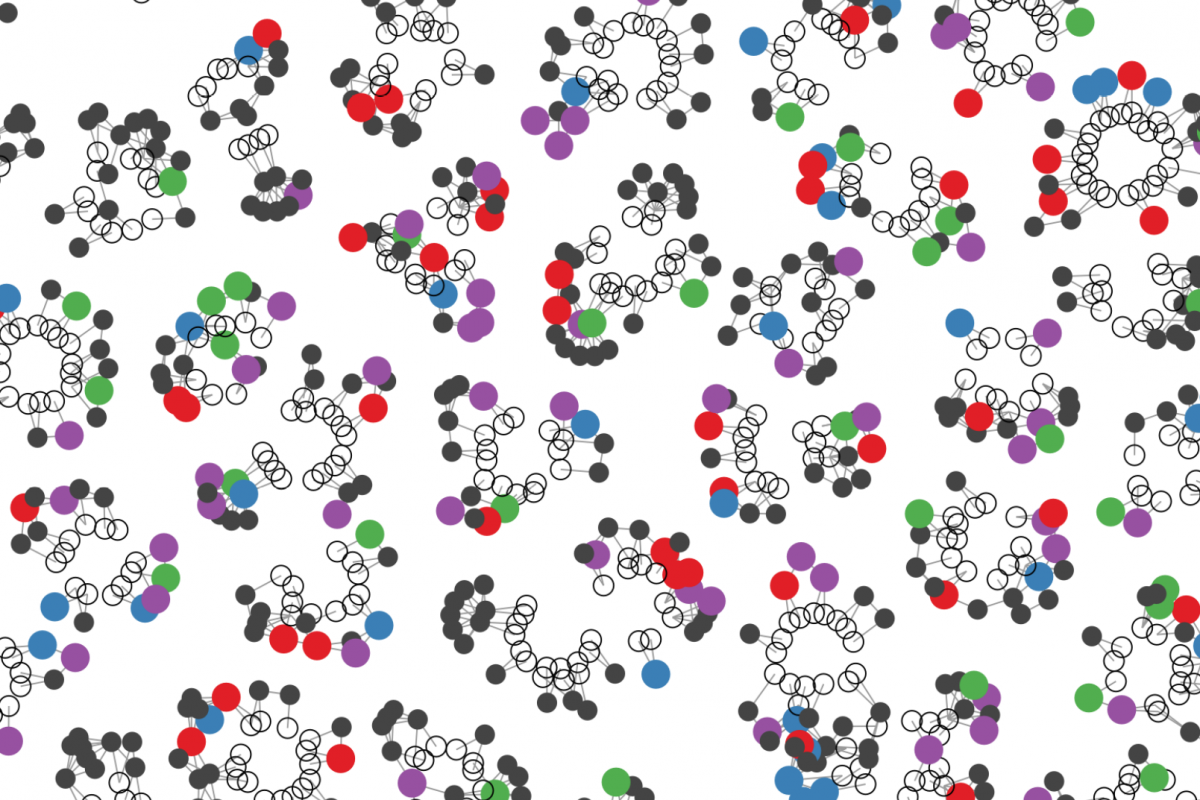News
Electronic Health Record Analysis Shows Which Diseases Run in Families

Each subgraph in this image is a family reconstructed from EHR data: Each node represents an individual and the colors represent different health conditions. (Figure: Nicholas Tatonetti, PhD, Columbia University Vagelos College of Physicians and Surgeons).
Acne is highly heritable, passed down through families via genes, but anxiety appears more strongly linked to environmental causes, according to a new study that analyzed data from millions of electronic health records to estimate the heritability of hundreds of different traits and conditions.
As reported by the Columbia Newsroom, the findings, published in Cell by researchers at Columbia University Irving Medical Center and NewYork-Presbyterian could streamline efforts to understand and mitigate disease risk—especially for diseases with no known disease-associated genes.
“Knowledge of a condition’s heritability—how much the condition’s variability can be attributed to genes—is essential for understanding the biological causes of the disease and for precision medicine,” says study co-leader Nicholas Tatonetti, PhD , the Herbert Irving Assistant Professor of Biomedical Informatics at Columbia University Vagelos College of Physicians and Surgeons and an assistant professor of systems biology. “It is clinically useful for estimating disease risk, customizing treatment, and tailoring patient care.”
But estimating heritability usually involves difficult and time-consuming studies of family members, especially twins. Instead, Dr. Tatonetti and collaborators, including lead coauthor, David Vawdrey, PhD , thought heritability could be estimated more easily by using data that is routinely included in hospitals’ electronic health records. Upon admission, patients are usually asked to provide emergency contacts, often family members who are also patients at the same hospital. “It occurred to us that this information could be used to infer family relationships and, combined with each patient and each contact’s health data, give us heritability estimates faster and less expensively than traditional methods,” Dr. Tatonetti says.
To read the full article , visit the CUIMC Newsroom.
Dr. Tatonetti specializes in advancing the application of data science in biology and health science. Researchers in his lab integrate their medical observations with systems and chemical biology models to not only explain drug effects, but also further understanding of basic biology and human disease. They focus also on integration of high throughput data capture technologies, such as next-generation genome and transcriptome sequencing, metabolomics and proteomics, with the electronic medical record to study the complex interplay between genetics, environment and disease.